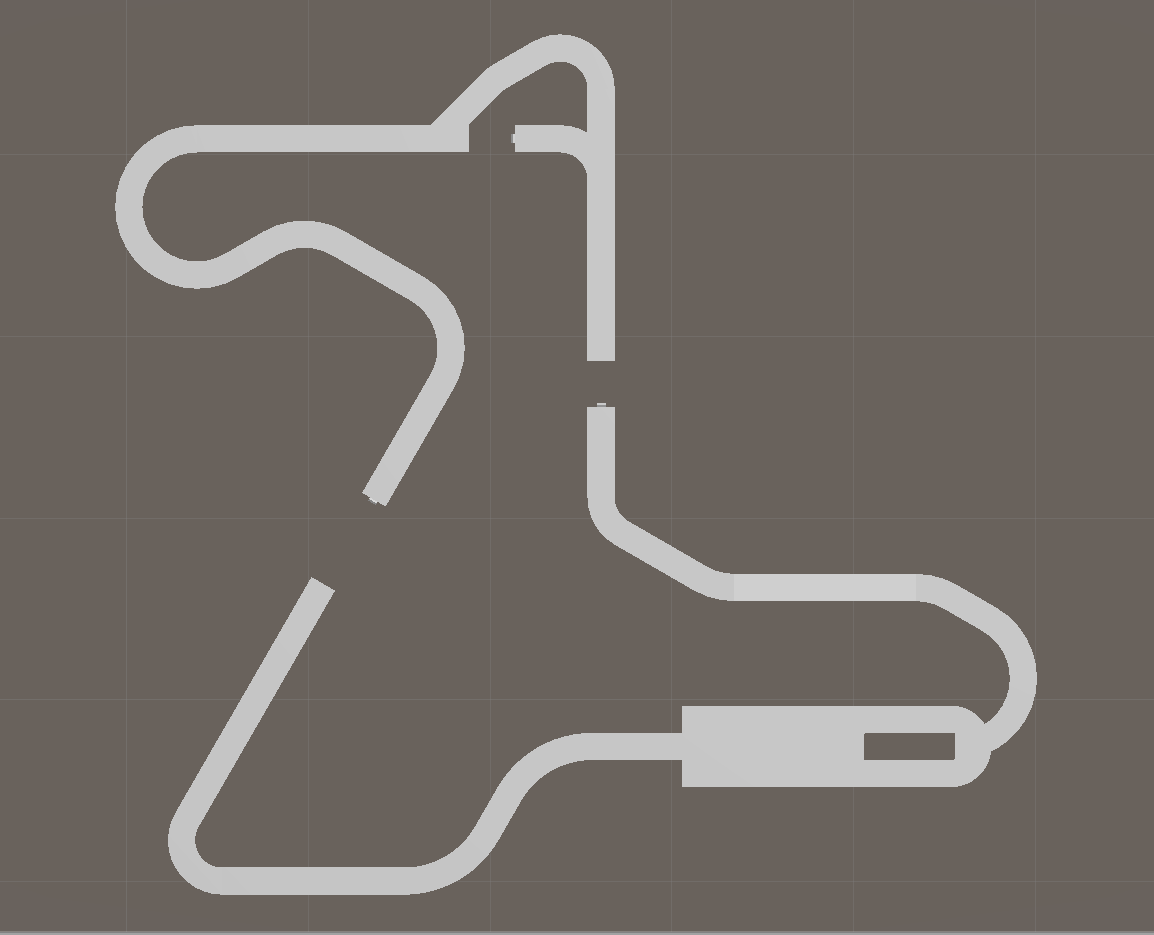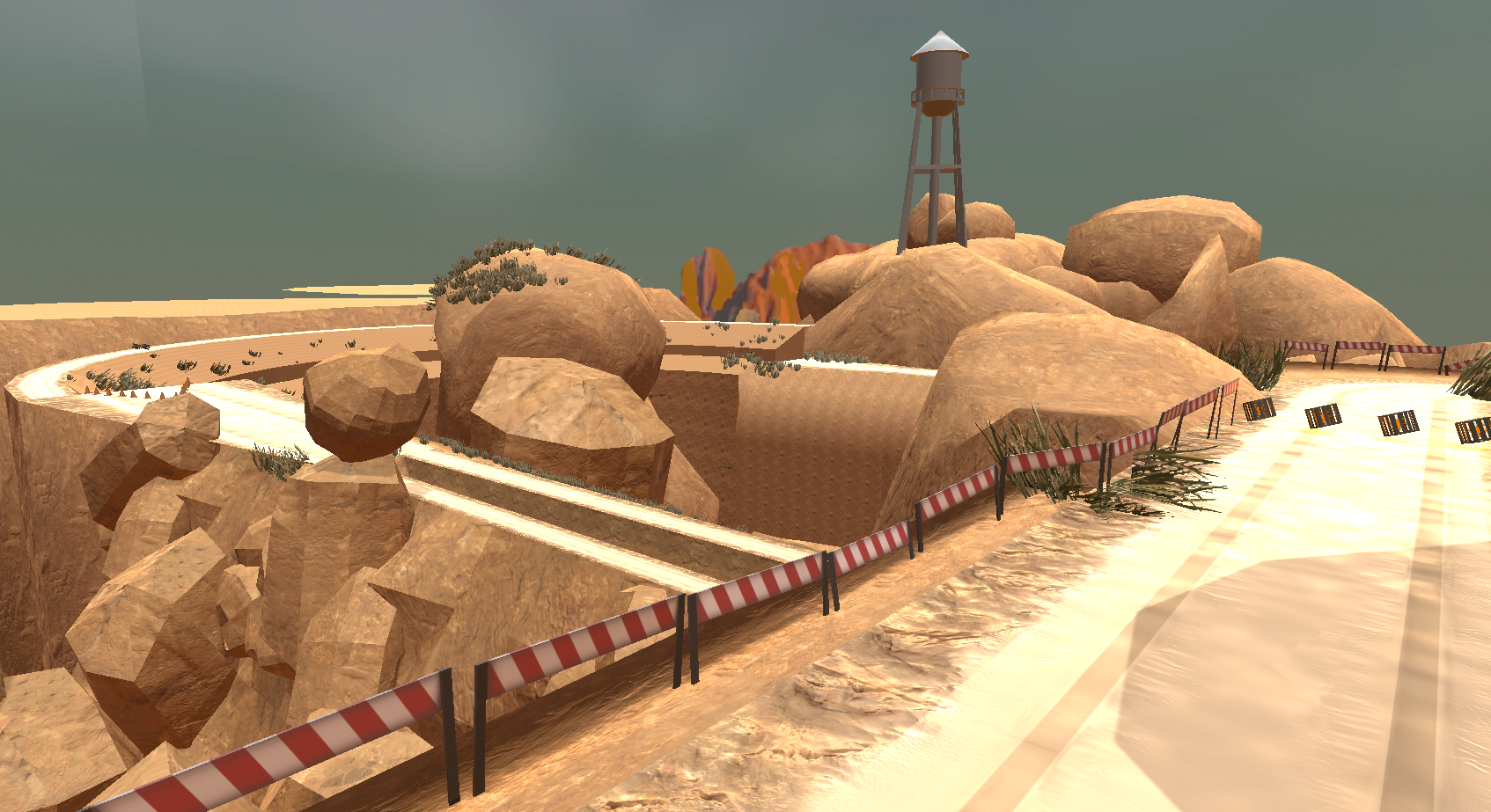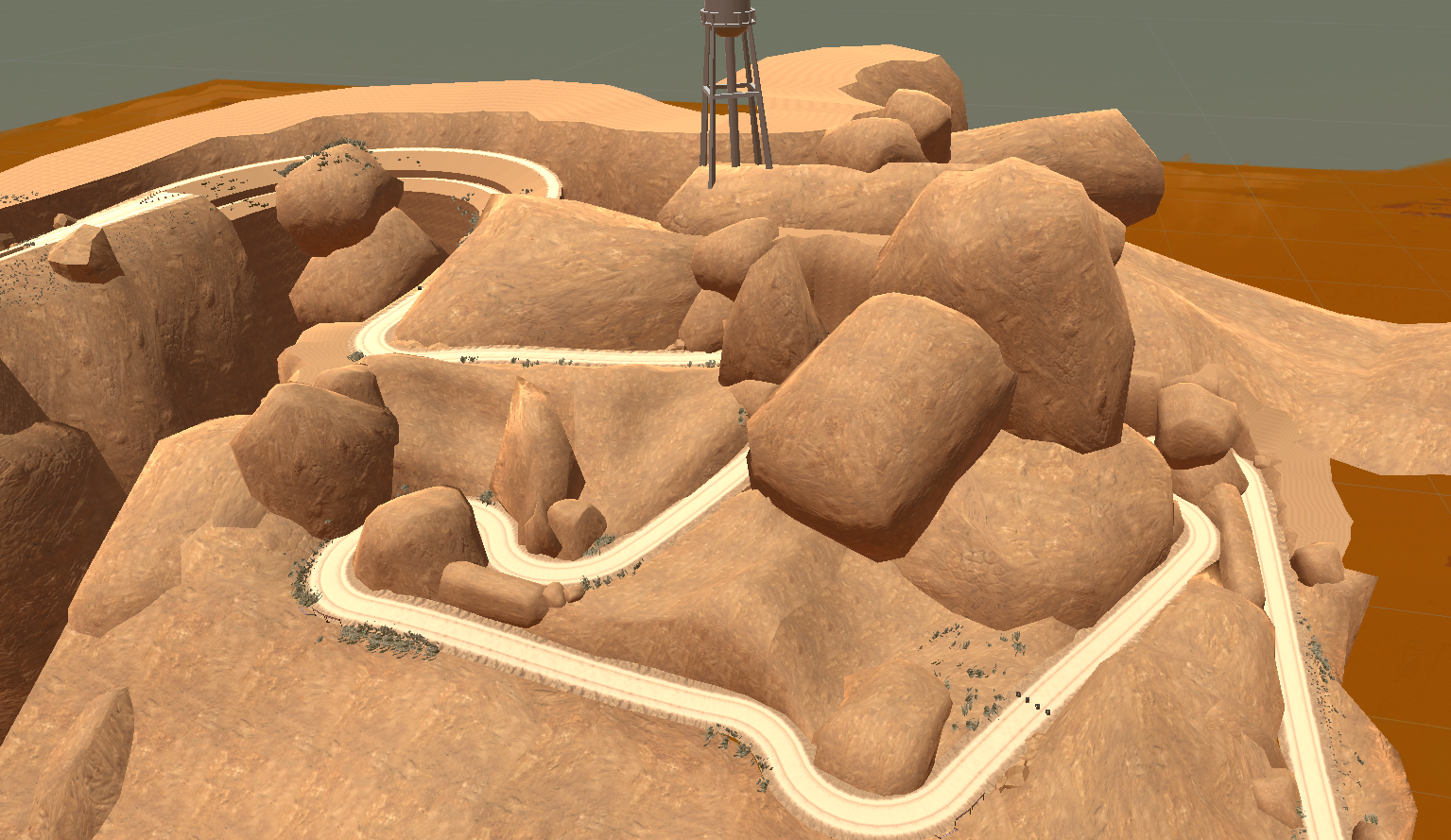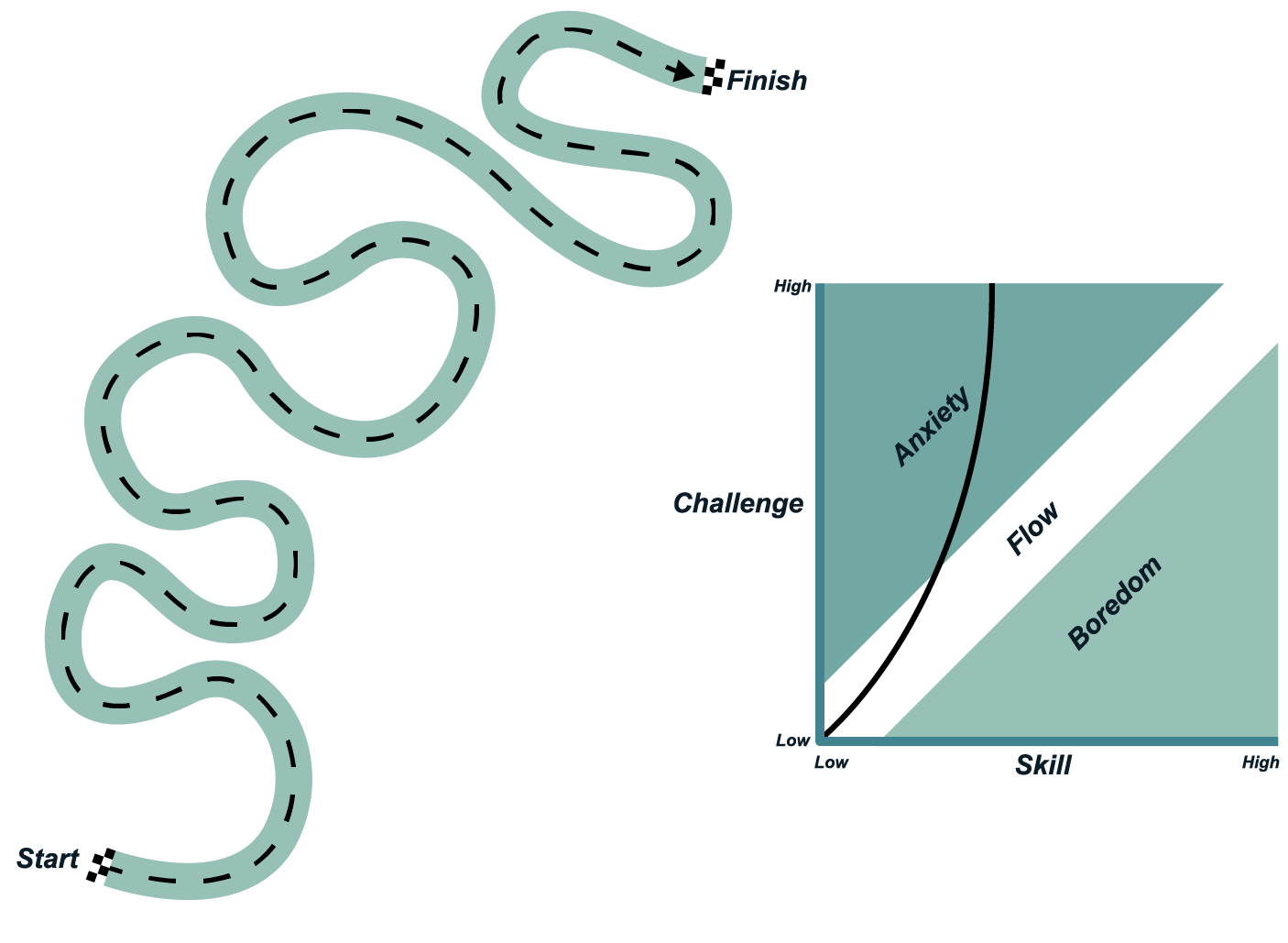Overview
NASCHAIR is a couch-competitive racing game I worked on during my second year at Falmouth University. Set in a post-apocalyptic wasteland, players are forced to race eachother using heavily-modded office chairs. Integrating up to four-player splitscreen, players could use office-themed pickups to gain an advantage over their competition.
My Main Responsibilities for NASCHAIR:
- Level Design: Studied real-world racetracks to inform design decisions. Created modular track pieces to test and whitebox different track layouts.
- Gameplay Design: Tested and iterated upon different designs for the vehicle movement system and pickups.
- Game Design Documentation
- UI Design: Worked with artists to create the game’s in-game HUD.
Team Composition:
Design: Charlie Tancock, Jonas Nilsen
Programming: Archie Andrews, Tom Daniels, Jack Maber
Audio: Ethan Bradley
Art: Kayleigh Clarke, Jacob Betts
Animation: John Dean, Ryan Schofield
My Level Design Process
Being unfamiliar with racing games and their conventions made designing gameplay and levels for NASCHAIR very challenging. I eventually found this to be helpful, as I could easily look at these games objectively and without personal bias. Throughout this design process, I researched the design process of real-world racetracks. Using these conventions as a foundation for my design, I could then break away from them to create moments of spectacle for the player.
During the development of NASCHAIR, I learned how to incorporate game flow into racetrack level design. By considering Flow as a combination of both stressful and restful moments, these could be combined in different ways to pose a compelling challenge for the player. In the context of racetrack level design, ‘moments of stress’ would be the level’s corners and turns, which is typically when players are the most challenged.
Similarly, ‘moments of rest’ are the levels straight paths, where players are given a platform to maintain their position, use pickups, or prepare for the next sharp turn. There are some places where straight paths can be considered cruicial, like at the beginning of a race; players should be given enough time to reach a competitive speed and understand the metrics of their vehicle, or in NASCHAIR’s instance, their chair.

The overhead layout of ‘Canyon Cruise’

The overhead layout of an unused circuit track.
‘Canyon Cruise’ Level Design Retrospective
During the development process, I was tasked with designing one of the game’s two racetracks for NASCHAIR: ‘Canyon Cruise’. Canyon Cruise had players race downhill, encountering sheer drops and a perilous switchback section. During the level’s whiteboxing stage, I created various track components using a combination of Probuilder and Dreamteck Splines. These pieces could fit together in various ways, which allowed me to experiment and rapidly iterate upon different layouts. From here I implemented the game’s pickups to the level in ways that would allow for negative feedback.

A sharp turn, coming right after a long stretch of jumps and cliff edges.

A perilous, rocky underpass that leads into a smooth turn.

The level’s switchback; a downhill descent with lots of sharp turns and falling hazards.

The flow of a straight racetrack, 'moments of rest'
